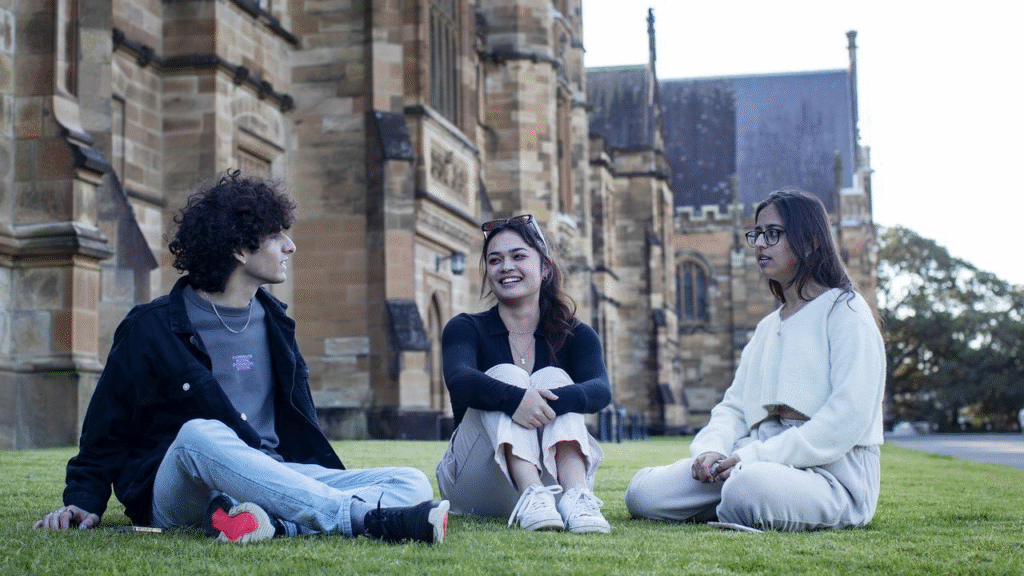What’s New in Australia’s International Student Policy?
Australia’s international student policies have seen major changes in 2025, driven by political and economic pressures.

The Labor government and opposition Coalition have introduced measures to curb migration, impacting student visa processes. These reforms aim to address housing shortages and maintain educational integrity. Below is a breakdown of the recent developments, their implications, and stakeholder perspectives.
What Are the New Policy Changes?
Australia’s government has tightened international student visa rules. The Labor Party, re-elected in 2025, raised visa fees from AUD 1,600 to AUD 2,000 starting July 2025. They’ve capped new international student commencements at 270,000 for 2025.
The opposition Coalition proposed a stricter cap of 240,000 and visa fees up to AUD 5,000 for elite universities. Stricter English language requirements and enhanced scrutiny of applications, especially from six Indian states, aim to curb visa misuse. Universities face penalties for non-compliance, and some have restricted applications from high-risk regions.
How Many International Students Are in Australia?
In 2024, Australia hosted 853,045 international students, up from 786,891 in 2023. February 2025 saw nearly 200,000 new arrivals, a 12.1% increase from the previous year. India surpassed China as the top source country, with 28% of Indian students choosing Australia, per a March 2025 survey. Despite tighter policies, enrollment is projected to grow 8–10% in 2025, driven by post-study work visa options. Education remains Australia’s fourth-largest export, generating $51 billion in 2023-24.
Why Does Australia Attract International Students?
Australia draws students with its world-class universities, ranked among the global top 100. Cities like Melbourne, Sydney, and Brisbane are among the top 50 student cities worldwide.
High-quality education in fields like IT, engineering, and healthcare aligns with global job trends. Post-study work visas, like the 485 visa, allow graduates to stay and work for up to two years. The multicultural environment, safety, and vibrant campus life also appeal, especially to students from India and South Asia.
Is It Harder to Get a Visa and Acceptance Now?
Securing an Australian student visa is tougher in 2025. The visa fee hike to AUD 2,000, with a potential rise to AUD 5,000, is a barrier. Stricter English language tests and financial proof requirements add complexity. Universities, particularly in response to fraud concerns, have increased scrutiny for applicants from Indian states like Punjab and Haryana. Visa approval rates for Indian students dropped by 48%. Delays and rejections frustrate genuine applicants, impacting admission cycles.
Why Are These Changes Happening?
The policy shifts stem from Australia’s housing crisis and migration concerns. Net migration hit 536,000 in 2022-23, driving up rental prices by 25%. Politicians link international students to housing demand, though they occupy just 4% of rentals. The Labor government aims to halve migration by 2025, prioritizing local housing affordability. Fraudulent visa applications, especially from South Asia, prompted tighter rules to protect educational integrity. Political pressure before the May 2025 election also fueled these reforms.
Will Colleges Struggle Without International Students?
Australian colleges rely heavily on international student fees, contributing $51 billion annually. The proposed caps could reduce enrollments, hitting metropolitan universities hardest. Regional institutions may also suffer, as international students support local economies.

Experts warn of a potential sector collapse, similar to Canada’s, if numbers drop significantly. Private colleges, often criticized for lax standards, may face less impact due to looser caps. Job losses in the sector, which employs 250,000 Australians, are a concern.
What Do Education Investors and Stakeholders Say?
Stakeholders are divided. The Group of Eight universities, led by CEO Vicki Thomson, slammed the Coalition’s fee hikes as “unreasonable” and harmful to Australia’s global education reputation. The Business Council warns that a 25% cap could undermine the $50 billion sector without solving housing issues. International student advocate Bijay Sapkota highlighted risks of increased racism and economic loss. Education expert Andrew Norton called the policies unfair but effective in reducing numbers. Some private providers face scrutiny for exploiting visa loopholes.
What’s the Broader Impact?
The policy changes risk Australia’s appeal as a study destination. Half of prospective students may reconsider due to high visa fees, per a 2025 survey. Competitors like Canada, the UK, and Germany offer clearer immigration paths, potentially diverting students. Strained ties with India, a key student source, could harm bilateral relations. Mental health challenges for international students, already significant, may worsen due to policy uncertainty and housing stress. Universities are urged to improve support services to maintain enrollment.
In summary, Australia’s 2025 international student policy changes, driven by housing and migration concerns, have tightened visa rules and capped enrollments. While the country remains a top destination for its quality education and work opportunities, higher fees and stricter scrutiny make access harder, especially for Indian students. Colleges face financial risks, and stakeholders warn of economic and reputational damage. As Australia balances domestic priorities with its global education market, the long-term impact on its universities and international ties remains uncertain.


 Is U.S. Visa Inadmissibility Based on Communist Party Affiliation?
Is U.S. Visa Inadmissibility Based on Communist Party Affiliation?  AI in Education: Help or Rising Hindrance?
AI in Education: Help or Rising Hindrance?  Did Trump Halt Harvard’s Foreign Enrollment?
Did Trump Halt Harvard’s Foreign Enrollment?  No Jobs for Foreign Students in US, UK, Canada?
No Jobs for Foreign Students in US, UK, Canada?  Mizoram Becomes India’s First Fully Literate State
Mizoram Becomes India’s First Fully Literate State  Severe Flooding Devastates NSW
Severe Flooding Devastates NSW